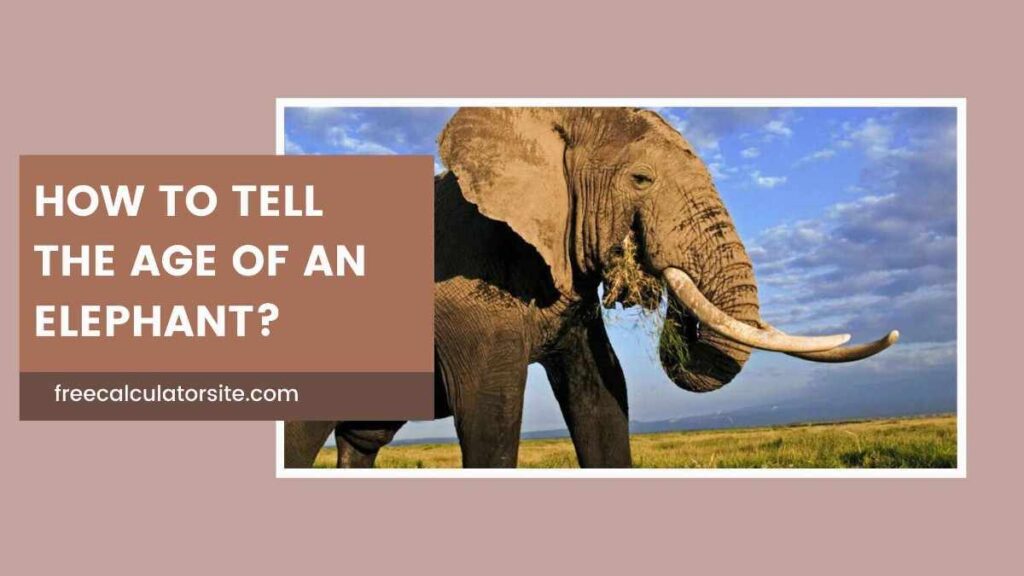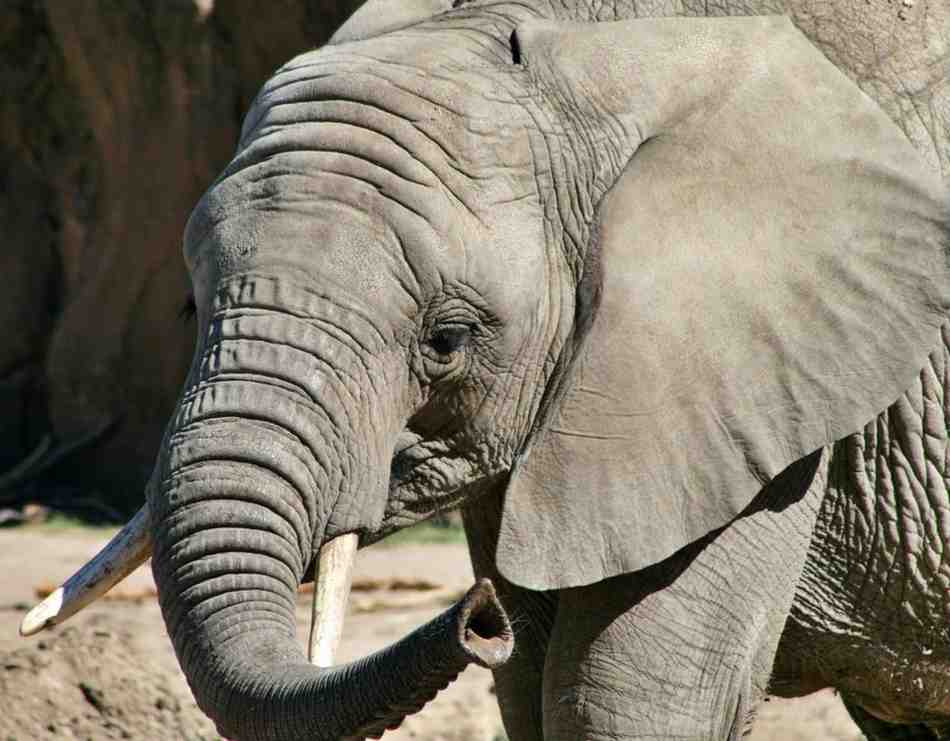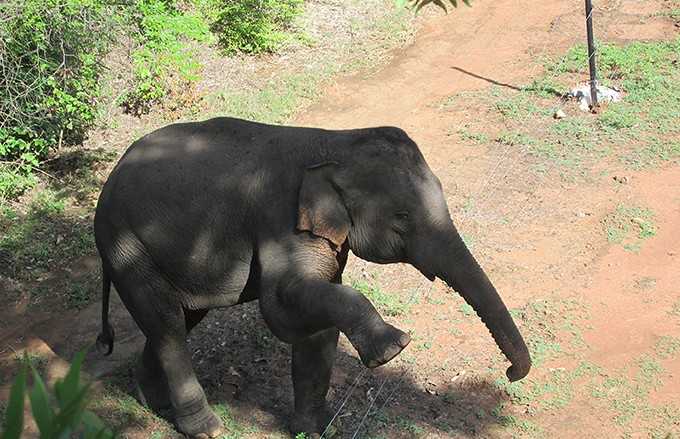Last updated on October 24th, 2024 at 09:41 pm

Elephants, the majestic giants of the animal kingdom, captivate our imagination with their intelligence, social behavior, and imposing presence.
Whether in the wild or in captivity, knowing how to estimate an elephant’s age is crucial for conservation, research, and care purposes.
But how do you tell the age of an elephant, especially when they live for decades and undergo changes throughout their long lives?
In this article, we’ll dive into the various methods used by researchers, conservationists, and even safari guides to determine the age of an elephant.
From physical features to behavioral patterns, we’ll cover the key indicators that can help identify whether an elephant is young, middle-aged, or elderly.
Physical Indicators of Elephant Age

Elephants, like humans, exhibit visible changes as they grow older.
One of the most accurate ways to tell an elephant’s age is by examining its physical characteristics, particularly in wild elephants where accurate birth records are unavailable. Below are some common physical indicators:
1. Size and Height
The size of an elephant can give important clues about its age.
Elephants grow rapidly during the first 15 to 20 years of their lives.
- Calves (0-5 years old): Newborn elephants are much smaller than adult elephants. A calf typically weighs around 200-300 pounds and stands about 3 feet tall at birth. During this period, they have a more rounded appearance, with a shorter, less pronounced trunk.
- Juveniles (5-15 years old): Between 5 and 15 years old, elephants are still growing, but they begin to gain muscle and develop a more distinct body shape. They will typically reach about half of their adult height by the age of 10, often standing at around 6-7 feet tall.
- Adults (15-30 years old): Full-grown elephants, which are usually around 20 years old, can stand up to 10-13 feet tall at the shoulder. Their growth in height slows down, and they begin to bulk up.
- Seniors (30-60+ years old): Older elephants tend to have a bulkier frame, and their growth plateaus. They develop a distinct sway in their body, and their gait may become slower.
2. Tusks
Elephants’ tusks grow continuously throughout their lives, and the size, shape, and wear of the tusks can offer strong hints about their age.
- Calves and Young Juveniles (0-5 years old): Newborn elephants do not have visible tusks at birth, though tiny tusk nubs, or “tushes,” may begin to show after 1 to 2 years.
- Juveniles (5-15 years old): At around 2 years of age, their tusks begin to elongate, growing several inches a year. By the time they reach their teenage years (12-15), their tusks are noticeable but still shorter and thinner compared to adults.
- Adults (15-30 years old): In adult elephants, tusks can grow several feet long and can be used to estimate age. However, individual variation in tusk size makes this method less precise for exact age estimation.
- Seniors (30+ years old): In older elephants, the tusks often show considerable wear, chipping, or even breakage. Some older elephants have smoother tusks with rounded tips, while others may have uneven tusks from years of use.
3. Skin Condition
Elephants’ skin changes with age, becoming rougher and more wrinkled as they get older.
- Calves and Young Juveniles (0-10 years old): Their skin is smoother and less wrinkled. It also appears more elastic and softer, much like the skin of younger mammals.
- Adults (20-50 years old): Adult elephants tend to have thicker skin with visible wrinkles, particularly around their trunks, faces, and legs.
- Seniors (50+ years old): Older elephants have noticeably rougher skin, which can even appear calloused in some places. Deep wrinkles and folds are prominent, particularly around the face and trunk.
4. Ears
The size and wear of an elephant’s ears can offer insight into its age.
Elephant ears grow throughout their lives and exhibit signs of wear from environmental factors, such as exposure to the sun, wind, and occasional skirmishes.
- Young Elephants (0-15 years old): Ears of younger elephants tend to be smaller relative to the rest of their body, with minimal wear and no significant damage.
- Adults (15-50 years old): As elephants mature, their ears become larger, relative to their body, and often develop more tears, notches, and holes from regular wear and tear.
- Older Elephants (50+ years old): In senior elephants, the ears may have significant wear, including larger tears and more notches. The edges of the ears often appear thinner and may have a more weathered appearance.
Also Read: How to Tell the Age of a Deer
Behavioral Indicators of Elephant Age

In addition to physical features, an elephant’s behavior can provide clues about its age.
Elephants exhibit distinct behaviors at different life stages, which can be observed both in the wild and in captivity.
1. Dependency on the Herd
- Calves (0-2 years old): Young elephants are heavily dependent on their mothers and the herd for survival. They spend most of their time close to their mothers and will frequently nurse.
- Juveniles (3-10 years old): Juveniles begin to explore more independently but still remain close to the herd for protection. They spend time playing with other young elephants.
- Adults (20-40 years old): Adult elephants, especially males, may begin to leave the herd and roam independently or with other males. Females, however, typically remain in their matriarchal groups.
- Older Elephants (50+ years old): Older elephants, particularly matriarchs, assume leadership roles within the herd. They guide the group, relying on their years of experience.
2. Social Roles
- Calves and Juveniles (0-10 years old): Young elephants are playful and energetic, engaging in games and social interactions with peers. They practice using their trunks and tusks through playful sparring.
- Adults (20-50 years old): Adults take on more defined social roles. Female elephants help care for the young, while adult males may become more solitary or occasionally rejoin the herd for mating.
- Seniors (50+ years old): In older age, elephants tend to become slower, more cautious, and often take on a guiding or mentoring role within the herd.
See Also: How to Tell the Age of a Baby Sparrow
Estimating Age in Captive Elephants

For captive elephants, such as those in zoos or wildlife reserves, more accurate age estimation is possible since their birth dates are typically known.
However, for those who work with elephants in sanctuaries or have rescued elephants with unknown histories, these physical and behavioral indicators become valuable tools.
Conclusion
Determining the age of an elephant can be a fascinating process, combining both physical observation and behavioral study.
By examining characteristics like size, tusk growth, ear condition, and social behavior, one can make educated guesses about an elephant’s age.
While no method is perfectly precise, understanding these indicators helps researchers and conservationists better manage elephant populations and ensure their survival in the wild.
Whether you’re a wildlife enthusiast or simply curious about these magnificent creatures, knowing how to tell the age of an elephant offers a deeper insight into their lives and the natural world they inhabit.

Sayantika Karmakar provides expert insights on financial calculators in her blog posts.
